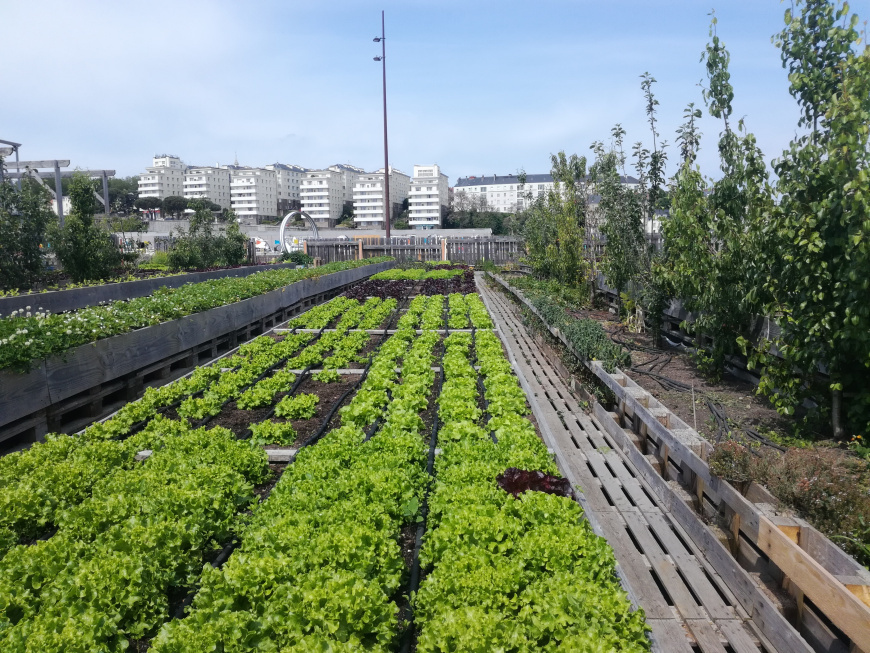City Blooming for Beginners
City Blooming for Beginners
Blog Article
City Blooming for Beginners
Table of ContentsThe Best Strategy To Use For City BloomingThe Buzz on City BloomingNot known Details About City Blooming Our City Blooming PDFsSome Known Details About City Blooming
Fascinated in growing food for sale in the City of Chicago? Below is a checklist of frequently asked inquiries relating to the rules and guidelines that cultivators should take into consideration when planning a city agriculture project.
The zoning change does not customize any kind of other codes handling composting, building licenses, buying or renting City possessed residential property, business licenses or environmental contamination. There are existing codes that manage these problems and they remain completely impact and might be applicable to your job. Neighborhood yards are usually owned or taken care of by public entities, civic companies or community-based organizations and maintained by volunteers.
Urban ranches expand food that is intended to be sold, either on a nonprofit or for-profit basis. Due to their business objective, city farms call for a company certificate.
What Does City Blooming Mean?
The amount of compost material can not exceed 25 cubic backyards at any type of offered time according to the criteria in 7-28-715 of the City's Municipal Code. Since the soil at most brand-new garden sites requires changing, garden compost, dirt, wood chips, or various other materials can be acquired to construct or enhance the expanding area.

If a building license is required after that the hoophouse will certainly be thought about an accessory building. You can find out more about the structure permit requirements by calling the Division of Structures. The 25,000-square-foot size limit is intended to protect against a single neighborhood garden from controling a given block or interfering with the block's existing property or commercial personality.
The limit does not apply to yards situated in Public Open Area (POS) areas. Can there be greater than one community yard that is 25,000 square feet on a solitary block? Yes. The size limit puts click here for more on individual yards, not to specific blocks. No. Fence is not needed, nevertheless, yards that have large parking locations might be called for to mount fence or other landscape design features.
The 30-Second Trick For City Blooming
B1 & B2 districts need that all industrial usage activities be carried out inside. Is secure fencing required for metropolitan ranches? Fences may be required, along with landscape design and screening, for certain vehicle parking locations and exterior job or storage space areas depending on area and the certain activity taking location.
Urban farms require structure authorizations and zoning authorizations prior to building (garden care). Other forms of city evaluation may be called for depending on particular frameworks, tasks, dimension, landscape design, licensing, public heath and stormwater management concerns.
Yes. The kind of certificate is figured out by what is happening at the website. The Department of Company Affairs and Customer Defense can assist figure out the specific sort of service permit that's needed. Yes. Off road vehicle parking is needed for many commercial projects in Chicago. The required number of car parking spaces is based upon the variety of staff members servicing website and not the square footage of the growing area.
The Of City Blooming

An urban ranch can offer garden compost material produced on website, nonetheless, the operation has to abide with the policies in 7-28-715 of the Chicago Municipal Code. Aquaponic systems are permitted inside on city farms in several zoning districts.
Approximately 5 hives or colonies of honey bees may be maintained as an accessory usage. Beekeepers must sign up with the Illinois Department of Farming. For additional information concerning the proposed zoning change you may speak to the Department of Real Estate and Economic Growth, Bureau of Planning and Zoning at 312.744.8563.
Farming in cities and metropolitan locations A city ranch in Chicago. Urban agriculture refers to numerous techniques of growing. https://www.goodreads.com/user/show/179466644-daniel-nold, processing, and distributing food in city locations. The term likewise puts on the location tasks of animal husbandry, tank farming, beekeeping, and gardening in an urban context. Urban farming is identified from peri-urban agriculture, which occurs in backwoods beside suburbs.
An Unbiased View of City Blooming
It can include an activity of natural growers, "foodies" and "locavores", that seek to form social media networks started on a common ethos of nature and neighborhood holism. These networks can develop by means of formal institutional assistance, becoming integrated into local community planning as a "transition town" activity for sustainable metropolitan growth.
Some of the first evidence of metropolitan agriculture comes from Mesopotamia.
Report this page